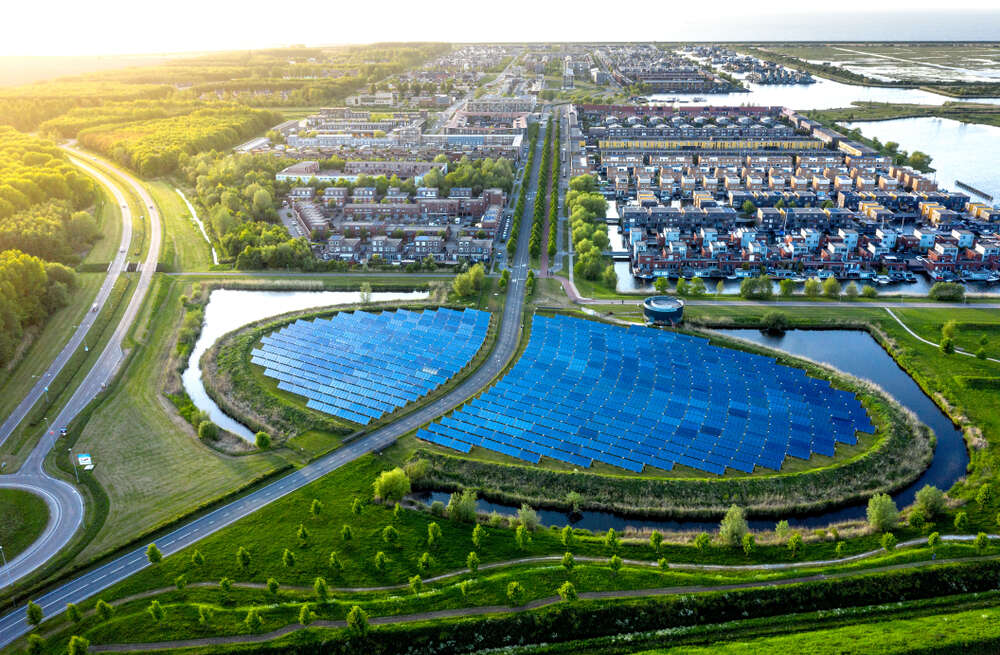
People can be successful as human beings while still living with limited and finite resources. That includes quality education, financial wealth and community projects, but they must be accompanied by an inclusive vision of social progress. That idea is what the fifth edition of the Arcadis Sustainable Cities Index is based on: which cities have the most thriving urban landscape while putting the planet first? Do these cities also provide their citizens with opportunities and inclusivity?

In order to incorporate that approach, Arcadis’s overall ranking is based on three elements:
• Planet (environmental)
• People (social)
• Profit (economic)
The theme of prosperity beyond profit is a new angle adopted by the Index, and it answers the question “what can prosperity possibly mean in a world of environmental, social and economic limits?”
1. Oslo, Norway
Thanks to Oslo’s initiatives, it went from being eighth overall in the Sustainable Cities Index in 2018 to being first in 2022.
Due to the presence of large amounts of greenery combined with low carbon emissions, Oslo has also achieved the World Health Organisation’s (WHO) target air pollution figures of between 10–12 µg/m³ since 2019.
This is also because, during the pandemic, the demand for recreational outside space has increased. In Oslo alone, there are over 1,400km of forest roads and 2,100km of nature trails.
Oslo’s sustainability does not stop here. The city also uses a lot of renewable energy, such as hydro power, which constitutes around 60% of its total energy consumption.
As for the future, the Norwegian capital’s emissions have reduced significantly since 2013, and it is on track for the objective of nearly zero emissions by 2030.
2. Stockholm, Sweden
Sweden is the second country in the OCED index for work-life balance. Swedes, in fact, spend more than 15 hours a day in leisure or rest. Stockholm is using these flexible work schedules to offer a better incentive to work and boost productivity.
Trains and buses in the capital have been using 100% renewable energy since 2017, making Stockholm one of the most sustainable cities in the world. The next step is to have fossil-free maritime traffic by 2030. This also contributes to the clean air quality that, until 2020, was considered good, with a US AQI level of just 10.
Economically, Sweden is part of the top ten most equal OECD countries, although its income inequality has been rising since the 1980s.
3. Tokyo, Japan
Tokyo is a world leader in the sustainable cities transport field, as exemplified by The Tokyo Metropolitan Government (TMG) vision shared in 2021 – Future Tokyo: Tokyo’s Long-Term Strategy. This plan was designed to provide a guide of the expectations and projects that will ensure a more sustainable life in the busy city through “digital and advanced technologies, including a study into the expanded use of next-generation mobility”.
Most of Tokyo’s transportation is made up of public options or non-motorised vehicles, such as bicycles. Unlike many major cities around the world, only 10% of its transportation is motorised. This is also due to the structure of the city, which involves a lot of tight alleyways or traffic restrictions. Micro mobility – the use of vehicles more compact than cars – is aimed not only to reduce CO2 emissions but also to improve the quality of life as it reduces congestion and noise.
The Japanese capital aims to reach net-zero emissions by 2050, which is a challenge for any city but not impossible, as its green financial market is regularly breaking new records. In fact, between 2016 and 2020, the sale of sustainability, social and green bonds grew 47 times.
4. Copenhagen, Denmark
This is one of the most energy-efficient and sustainable cities in the whole world. It has a Carbon Neutral by 2025 Plan that, as the name suggests, aims for it to become the first city to achieve carbon neutrality by that year. With its energy usage tactics and sustainable urban development, Copenhagen is progressing towards this goal.
However, even though Copenhagen has already reduced its CO2 emissions by 80% since 2009, it is unlikely to reach net zero by 2025. Mayor Sophie Hæstorp Andersen said: “It’s a shame we won’t reach it by 2025. But that’s not the same as saying we won’t make it by 2026, 2027, or 2028. So there is still hope that we will.”
One of the major components of the plan is sustainable transport. Copenhagen has removed over a third of all fossil-fuelled transportation since 2019, consequently eliminating more than 90,000 tonnes (t) of greenhouse gas emissions per year.
Copenhagen’s reputation is also due to the fact that one-fourth of the city comprises green spaces. Along with that, newly constructed buildings will incorporate roof gardens that are self-sufficient thanks to rainwater.
5. Berlin, Germany
Berlin houses over 2,500 parks and one million trees, many of which live in the Grunewald Forest. Thanks to the widespread greenery, there are numerous start-ups to both safeguard the environment and promote air quality. One of them is Green City Solution, which implements Green City Trees: a type of green street furniture that motivates people to stay outside, while simultaneously cleaning the air thanks to natural moss filters.
Berlin is planning on going climate-neutral by 2045. So far, it has been successful as it has achieved its climate protection target for 2020, having a reduction of 41.1% compared with 1990 in 2019, when the city produced only 17.2t of CO2. However, Berlin has increased its ambitions even further: its CO2 emissions are to be reduced by at least 70% by 2030 and by at least 90% by 2040, compared with 2019.
[Read more: What are the top cities for commuting by bike?]
6. London, UK
With the capital’s structured transport and work opportunities, London is the go-to place for young workers, positioning itself in second place on TotallyMoney’s list of The Best Cities for Millennials. London has a lot to offer when it comes to new initiatives, which now mostly revolve around transport and sustainability.
In fact, the thorough Tube connections and lengthy bus lines make it possible for most to access jobs and opportunities. Mayor of London Sadiq Khan is setting out a Transport Strategy that aims to modify the way people travel. By 2050, London is planning to reach zero emissions, also thanks to the introduction of the Ultra Low Emission Zone and the Toxicity Charge. All these initiatives are hoped to contribute to the goal of making central London a zero-emission zone by 2025 and expanding to the outskirts by 2050.
London also benefits from its work-life balance compared with the rest of the country. For example, the average working week in London is shorter than most other places in the UK: the usual number of hours worked per week in the UK is 39.1, while Londoners work around 38.1 hours.
7. Seattle, Washington
Seattle is succeeding at sustainability in multiple ways. For example, it is one of the greenest cities in the US in terms of the number of parks, forests and fields. It generally has great air quality, also motivated by the Clean Car Law. The law entails that cars that do not pass an emissions test cannot be legally driven in the state of Washington.
To control air pollution, there is a Clean Buildings law that requires “owners of non-residential buildings over 50,000ft2 to benchmark energy consumption, meet an energy performance target, establish an energy management plan, and implement an Operations & Maintenance program”. This law was passed in 2019, but participation will be mandatory from 2026.
Another way of reducing air pollution is through alternative ways of transport, which is important for Seattle because the city is struggling to meet its greenhouse emissions goals. Since 2016, King County GHG emissions have increased by 1.1%; however, this also means that its overall emissions declined by 4.1%.
In the second week of September 2022, however, Seattle registered a reading of 153 PM 2.5 during the wildfires, which was the worst pollution in two years.
8. Paris, France
Thanks to its mayor, Anne Hidalgo, there are many green and sustainable initiatives that are being acted upon in the city of love. For instance, more than 900 miles of bicycle lanes have been built around the city in the past five years, many important roads have been closed off to traffic to prevent pollution and littering and, from 2024, all diesel cars will be banned, followed by petrol cars from 2030.
By 2026, Hidalgo plans to plant almost 200,000 trees across Paris, thus covering 50% of the capital with green spaces.
Transport is responsible for most cities’ pollution, and Paris is no exception. However, it has multiple sustainable transport initiatives and solutions that make the city more eco-friendly. By 2025, buses in Paris will be 100% electric, but the city encourages people to use non-motorised transport such as bikes and its Vélib’ service.
9. San Francisco, California
A robust transport system is needed for a bustling city like San Francisco. The city’s multi-modal transit system and the broader transportation network are trying, thanks to numerous initiatives, to create environmental benefits instead of having a negative effect on the environment. Some examples are:
• Biking – the city adopted improved biking facilities and paths, as getting just one person to switch from driving to biking could reduce up to 1.9t of CO2 emissions in a year
• Pedestrian safety – to support local businesses and reduce traffic congestion
• Transit – well-planned public transit fuelled by renewables is the cornerstone of San Francisco’s low-carbon transportation system
However, San Francisco also has a very well-organised waste disposal system. In fact, around 77% of its municipal waste is recycled, as well as mandated composting. Sustainable food, waste reduction, transportation and water conservation are only some of the factors why San Francisco is well-known for sustainability.
10. Amsterdam, The Netherlands
The Netherlands was described as the country with the best work-life balance in 2018, according to the OECD Better Life Index. Evidence shows that in the Netherlands, 0.3% of employees work long hours in paid work. Full-time workers spend 64% of their day on personal activities such as sleeping and hobbies.
The city’s public transport links are impressive too: unlimited travel is granted with the use of the OV chip card. The public transport system also contributes to reducing CO2 emissions, with the aim of a 55% reduction by 2030 and 95% by 2050. Amsterdam is set to stop using natural gas by 2040 and have only emission-free transport by 2050. The Dutch city also has a plan to become a circular city by 2050, meaning everything it produces will be recyclable or reusable.
[Read more: Reindustrialisation and the case for urban manufacturing]






